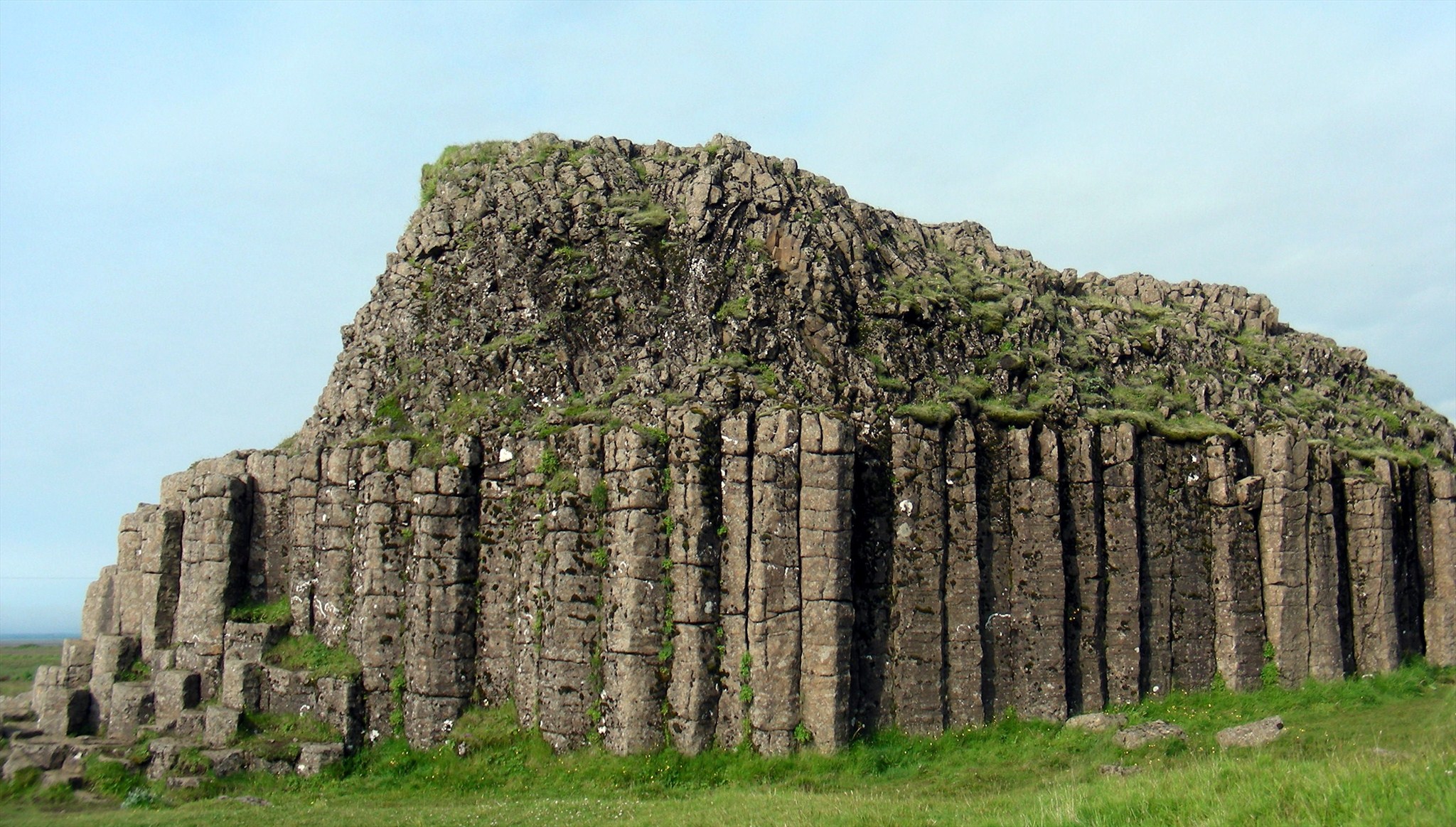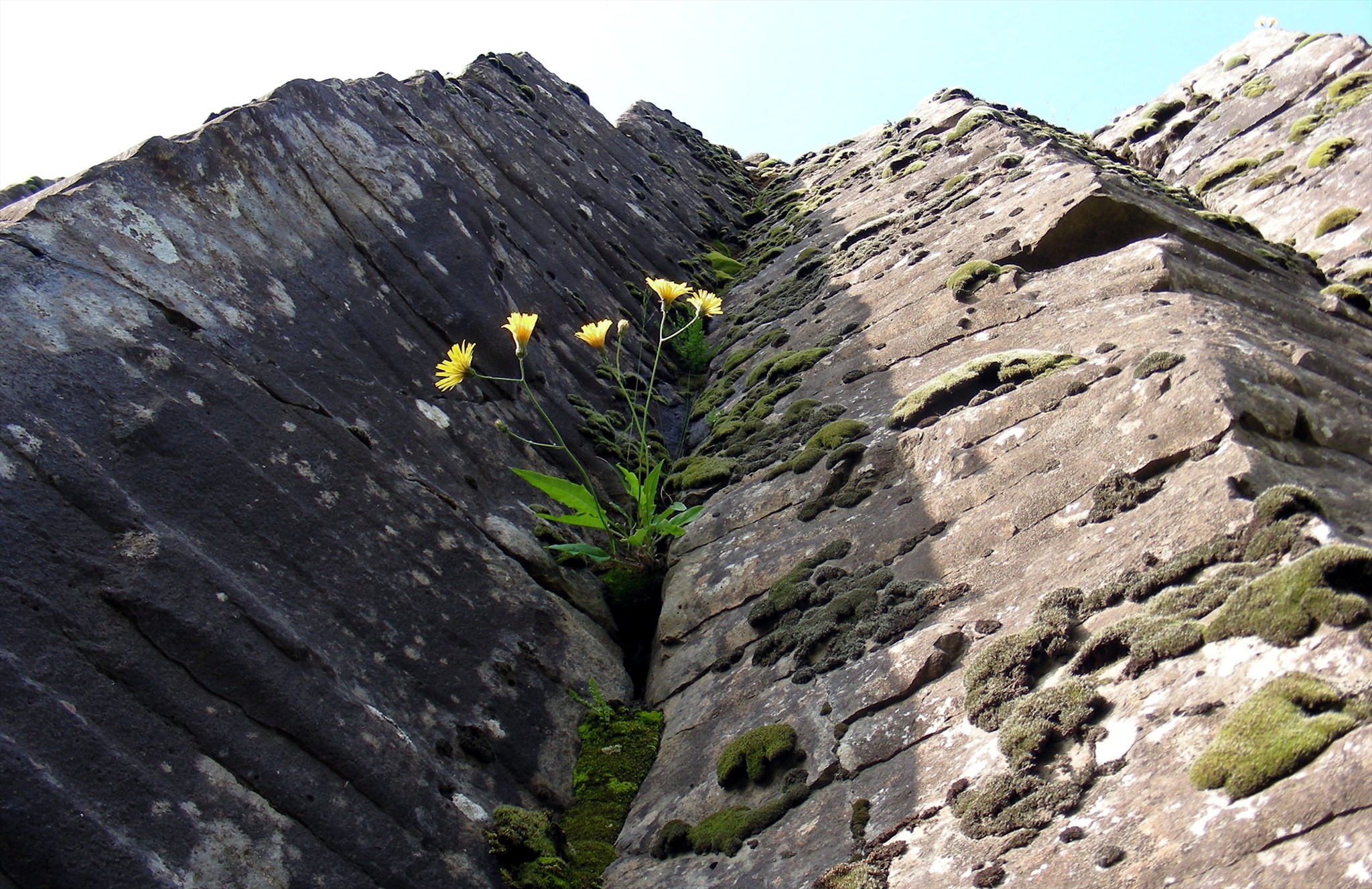Dverghamrar EarthCache
-
Difficulty:
-

-
Terrain:
-

Size:  (other)
(other)
Please note Use of geocaching.com services is subject to the terms and conditions
in our disclaimer.
Iceland is great place to study basalt columns. On the south coast there are no other places where you can get as close to the columns as here at Dverghamrar. The place is easy to access with only a short walk from the parking place.

Dverghamrar (Dwarf Cliff) are peculiar and beautiful formations of columnar basalt. The landscape is thought to have been moulded at the end of the Ice Age. The sea level was higher at that time and it is believed that the waves caused the peculiar look of the rocks.
Geology of Dverghamrar:
During the cooling of a thick lava flow, contractional fractures form. If a flow cools relatively rapidly, significant contraction forces build up. While a flow can shrink in the vertical dimension without fracturing, it cannot easily accommodate shrinking in the horizontal direction unless cracks form. The extensive fracture network that develops results in the formation of columns.
The straight columns were formed by cooling of the lava from below. The curved columns were formed by cooling from above, and the division in the middle of the layer marks the juncture of these two growth processes.
Lava flows in a shallow valley:

The lava solidifies and cools. Straight columns of the lower tier are formed. The river running though the valley gets blocked.

The river runes over the nearly solidified lava causing rapid solidification. Curved columens are formed by rapid cooling from above, when water triples down into the lava:

Few hundred meters of palagonite ad lava layers pile up over the next millions of years:

Glaciation and the sea shape the palagonite during latter half of the Ice Age:

The size of the columns depends loosely on the rate of cooling; very rapid cooling may result in very small (<1 cm diameter) columns, while slow cooling is more likely to produce large columns.

Your task:
- At the info board you can read: “About 10 meters of the lower tier can be seen, consisting of straight columns with a thickness of one metre or more.” Is that so? Measure the diameter of some columns. What do you find: The smallest diameter and the most common found diameter? Here is a trick: The average women has a hand span of 20 cm and average male of 22 cm. The hand span is the hand width, from tip of outspread thumb to little-finger. It is very handy to know this measure. The stretch varies – find your own beforehand with a ruler.
- At the info board you can read: “The lava must have flown in a shallow valley, probably from the north-west.” Observe the landscape: Can you find any evidence supporting this – or contradicting it?
- Send your answers to my profile at geocaching.com before logging online. You need not wait for my answer to log your find. I will contact you if there is a problem with your answers.
- Optional: Take a picture of your GPS at Dverghamrar and post it with your "Found it" log. You may also be in the photo.

Logs without answers emailed to CO before (or within minutes) of logging will be deleted without any further notice. If you cannot send the answers, then wait with the online log.
You have to have been at the location after the release date of this cache - old holiday visits do not count and are not accepted.
 View to Foss á Sidu.
View to Foss á Sidu.
Additional Hints
(No hints available.)